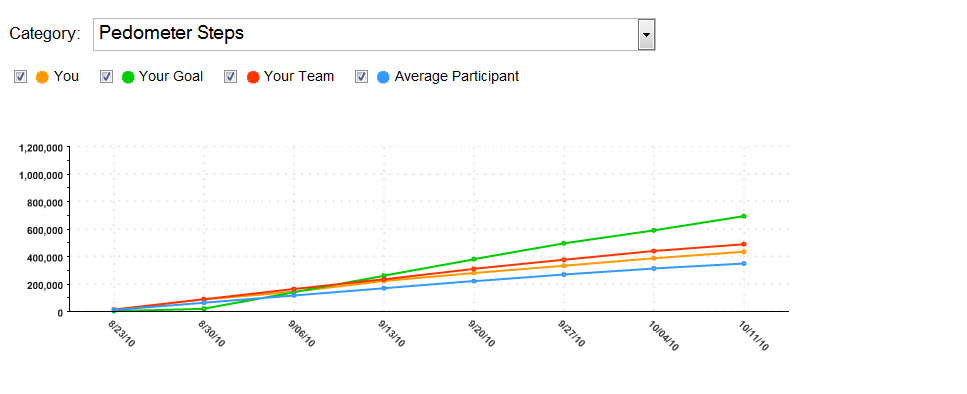Entries in Social Health Community (19)
Injecting Consumers Into Your Channel Engagement Strategy
 March 25, 2011
March 25, 2011 
While attending health care conferences, I often hear presenters describe their pilot programs and share what they have learned from new and expanded engagement initiatives delivered through online (social communities, social media, portal), mobile phone, telephone or email channels.
Many companies are in the “experimentation” phase. They are determined to discover the effectiveness of each channel in generating consumer awareness, interest and participation in their health and wellness.
When discussing their channel plans, I tend to hear companies say “once we have learned about how the channel can be leveraged, we will be ‘operationlizing’ it into our programs”.
During my conference panel last week on multi-channel engagement, I emphasized the importance of incorporating an interim phase to “Consumerize” the channel strategy before moving into the operations phase.
“Consumerizing” entails understanding the needs of each priority consumer group or segment (e.g. adult patients with diabetes, children with asthma) and determining how mobile for example can be utilized with other channels to meet their needs. Specifically, companies need to determine the “role” that each channel plays such as enable access, educate, motivate, guide decision making, deliver emotional support or help with care collaboration.
With a clear understanding about the set of channels and how each one brings value to the consumer segment, providers/plans/employers can effectively orchestrate consumer engagement for maximum results.
Channel Challenges
This is not easy to do. Channels are converging. For instance, consumers are using their desktop to upload pictures into a social community and then getting messages on their mobile from the community. They are receiving an email with a link into the online portal for their lab test results. Consumers are viewing mobile messages about preventative care with an option to click to connect for appointment scheduling.
With this convergence, the channels are becoming intertwined and integrated which brings complexity to planning, implementing and evaluating channel initiatives.
- Channel Planning: Many organizations have separate committees for each channel (e.g. mobile, online/social media) planning their own strategy. Instead of looking at one channel, organizations need to take a more strategic and holistic view by starting with a consumer segment and understanding their channel preferences and behaviors in order to define the role that each channel can play in meeting their needs.
- Channel Implementation: Companies tend to spend more time thinking through the internal processes for sending content over these channels and not enough time thinking about how the consumer receives and interacts with it. They need to consider the information that is presented and captured within each channel and how it is shared across channels. All channels must be connected and synchronized to deliver the best consumer experience.
- Channel Evaluation: Although many organizations are still looking at engagement one channel or campaign at a time, it is essential to evaluate the effectiveness of the channel at the consumer segment level. Each channel needs to be evaluated based on the role it was designed to play for that specific segment.
Consumer- Centric Channel Strategy
Companies outside of the health care industry have a big head start. They have an established consumer segmentation approach. Consumer centric businesses in the financial services and hospitality industries are overlaying their channels onto their segmentation to deliver a relevant and meaningful consumer experience. These companies are also focused on driving consumer engagement. A colleague at a large financial services firm told me about the “O2O” trend and how they are focusing on optimizing the “online to offline” experience (e.g. using targeted social media to drive card members to an event).
There is so much that health care organizations can learn and they are beginning to look outside of the industry for new strategies. Health care companies are starting to realize the powerful role that new channels and approaches can play in motivating consumers to take on more responsibility in managing their health and wellness.
Employee Engagement Series: Motivating Through ‘Comparative Data’, ‘Messaging’ and ‘Educational Information’
 December 15, 2010
December 15, 2010
 Shape Up The Nation Comparative Data
Shape Up The Nation Comparative Data
According to Hewitt Associates’ survey with employers, A Road Ahead- Emerging Health Trends 2010, “changing employee behaviors related to health (e.g. encouraging employees to live healthier lifestyles and manage chronic conditions) will continue to be top of mind for employers over the next several years”.
Medium and large employers are evaluating different cost effective approaches that leverage technology to engage employees in their health. One approach that has generated results at the work place is social competition. Employees that participate in social competitions between co-workers and other companies gain the support and encouragement from their teammates to realize personal benefits such as getting more exercise, eating healthier and losing weight.
GTECH, a global technology company with over 3,000 employees in the U.S., piloted Shape Up The Nation’s platform back in 2007 in their headquarters office in Rhode Island. They noticed their employees were actively participating in the program and decided to roll it out to all U.S. employees located in 24 states the following year.
“Our employees tell us that they like to have a structured program with the option of participating in any of the three options (e.g. weight, exercise and nutrition) with the team aspect”, explains Leo Perrone, Director, Employee Benefits at GTECH Corporation.
Through the technology, employees can track and monitor their progress. “What they really like is the comparative information because it motivates them to strive harder, serves as positive peer pressure and it helps the team captains to send out motivational messages”, emphasizes Perrone.
In fact the team captains are an essential piece of the social competition. GTECH recently had a meeting with their team captains to share best practices and make sure they have the tools that they need.
Team captains regularly send out messages to encourage their teammates to try harder together and to congratulate them on their past efforts. Employees also send virtual ‘high fives’ and messages of support to their teammates.
Perrone discussed the employees’ response to the nutrition information that was tested in the platform this summer. “Our employee loved it. They entered in their meals and saw the calories, fat, protein, carbohydrates and sugar breakdown for the foods they are choosing. Our employees became more aware of what they are really eating on a daily basis”. One of GTECH’s benefits for employees is the option to participate in six nutritional sessions each year. We agreed that the nutrition information from Shape Up The Nation’s platform would be valuable to share with their nutrition educator for further insight.
GTECH plans to continue with this social competition approach. “This is a foundational program for us since it makes a difference in the personal health of our employees and it also helps with team building. Our employees get to know each other through these competitions and this helps our business” concludes Perrone.
More on employee engagement as the series continues...
Have you seen "Challenge Me" as an engagement driver?
Secrets for Leveraging Social Community for Member Engagement
 November 16, 2010
November 16, 2010 During the 6th Annual World Technology & Innovation Congress (WHIT), I led a panel to share Social Community insights from The Regence Group and Blue Cross Blue Shield of Rhode Island. With my extensive online community experience, I was impressed with the capabilities and design of this healthcare social community that Regence has built and grown to over 600,000 members across five Plans and four states.
Torben Nielsen, Director of myRegence.com has been leading the community development from the beginning, incorporating features to engage the member such as rewards, ratings, decision support tools and an integrated experience tying together content into community.
Key Concerns for Social Communities
As health plans develop their social community strategy, they often confront three key concerns from internal stakeholders. The first is around addressing negative comments by members. “We tell them that your members will say what they want about your plan but you have an opportunity within the community to have a customer service contact them directly to resolve any issues or post a response to their comment”, explains Torben. A second concern is about the posting of personal health information which can be filtered by the community software. The third issue is about consumers offering inaccurate information. “One of the roles of our moderators is to ensure that the member is directed the right answers when necessary”, replies Torben.
Engagement Capabilities within the Community
The Regence group designed MyRegence.com with a compelling set of features to engage and empower members. Here are four capabilities that I feel are the most compelling:
1. Reviews. This social community requires that you have a claim before you can review your provider experience. Your provider can post a response to your comments following your review. Other community members can send you a message to learn more about your experience as they consider using the provider.
2. Rewards. Members earn rewards points for using the Community to review new health information, become part of a wellness group and for entering their wellness activities such as exercise, diet and preventative care.
3. Decision Support. As a member considers a particular treatment option, he can review the percentage of members who have had the treatment done or prescribed and see the estimated treatment cost range and an estimated personal cost.
4. Integrated Experience. When a member reads information about eating healthy, she can click a link to watch videos from Chef Tse, discuss ideas for cooking light meals with the community and request to receive eNewsletters filled with food related articles and links into additional content and community discussions of interest.
My Blue Community
The Regence Group has defined a part of my Regence.com as the My Blue Community to serve as a national online community platform that supports members from other participating Blues plans including early adopters Blue Cross Blue Shield of Rhode Island, Blue Cross Blue Shield of Massachusetts and Blue Cross Blue Shield of Louisiana. Kimberly A. Holway, Market Segment Manager, Strategic Marketing & Product Innovation from Blue Cross & Blue Shield of Rhode Island discussed their experiences planning and rolling out My Blue Community to their members this past summer.
Value Proposition to Members
“When we marketed My Blue Community to our members, we positioned it as a ‘safe and secure place to share experiences and get support’ from others”, explains Kimberly. “We view this as a way to expand the network so that members can more readily find people with their same health issues and interests”. BCBS of Rhode Island members are expressing the value that they see with the community. One member confirmed that it was a ‘safe environment to seek advice’ with peers that are ‘trustworthy’.
As Torben pointed out, you need to be a member of the health plan to log in which ensures that they are an adult participating in the community.
Another BCBS Rhode Island member expressed the value that she gains ‘by reading what other people have posted’ and ‘seeing stories which are relatable’.
Member Engagement Validation
There is so much to learn about how consumers engage in private vs public (e.g. Facebook, destination health sites) social communities. Healthcare organizations are experimenting with both formats to understand the differences in the content shared and the frequency that consumers engage just to name a few. When evaluating engagement, it is also important to understand how much consumers gain when contributing vs consuming content from these communities.
How can health plans bring new sources of value to educate, support and enable members to collaborate with others about their health within these social communities? Stay tuned.
UnitedHealth Group Launches OptumizeMe Mobile App to Motivate Healthy Behaviors
 November 10, 2010
November 10, 2010 During my panel at the World Congress mHealth Summit in July, Bud Flagstad, VP Strategic Initiatives at UnitedHealth Group mentioned their upcoming mobile app which is designed for healthy challenges.
OptumHealth, a business unit of UnitedHealth Group, has just launched the free OptumizeMe app for Windows Phone 7 devices, which will be followed by Android and iPhone platforms in 2011. OptumizeMe is a unique health and fitness app designed to make health both fun and social.
The idea of challenges and trackers was tested with UnitedHealth employees last summer. UnitedHealth found that the challenge participants tended to meet and exceed their fitness goals faster.
With OptumizeMe, you can create challenges and invite others in your social circle to participate. If you are planning a run challenge in Central Park, you can extend your invitation to others in the geography who then opt in to join you. You can use a map to show the location of your event and to check out other events in the area. You can also send motivational messages to your friends and family around the challenge and post your progress to Facebook. Others can respond with a “thumbs up” or a “butt kick” to move you closer to your fitness goal.
Once you complete your first Challenge, you receive your first virtual trophy, a Pioneer badge. Some badges are won based on your efforts and others are a surprise which keeps fitness fun.
In addition to social challenges, you can use OptumizeMe to manage your personal challenges such as training for a marathon or accelerating your physical activity during the holidays. Think about how you would use the OptumizeMe app. What personal challenges and social challenges would you choose to manage?
Purple Path for Consumer eHealth Engagement
 October 26, 2010
October 26, 2010

During the Partners’ Center for Connected Health conference, BJ Fogg, Director Persuasive Technology Lab Stanford University created quite a stir when kicking off the event. I heard many attendees continue to discuss his behavior framework throughout the conference. BJ clearly delineates between consumer behaviors that are new (green), familiar (blue) and continuous (purple). He defines the time frame for changing these behaviors as one time, spanning a time period or becoming an ongoing path.
Where Are You Asking Consumers to Go?
BJ emphasized the need to “put hot triggers in the path of motivated people”. Eric Zimmerman, CMO of RedBrick Health echoed BJ’s approach suggesting that “we figure out what people want to do and link their action path to that”. Eric also mentioned that it is easier for consumers to be healthier with others. He cited their recent research revealing that those “working alone to reach health goals were half as effective as those working as part of a team”.
During her keynote, Sheena Iyengar, Columbia Business School Professor and author of “The Art of Choosing” described the challenges that consumers have in selecting between their many options and how it becomes easier after gaining “expertise in the decision domain”. Sheena pointed to the strategy of providing guidance including social communities to generate the wisdom of the crowd around how they made their decision.
How Are You Designing Their Journey?
Several speakers warned against designing the path for them and highly recommended going through the process with them. Noam Ziv, VP Technology at Qualcomm explained that people have different approaches to their health and need options. Through research, companies can define the set of approaches and identify the profile of people that will respond to each.
How about those who have stopped along their way? Madeline Pantalone, VP of Strategy and Business Development at GreatCall (Jitterbug) described how they proactively reached out to those who stopped using their service to better understand their needs and resolve problems.
Consumers are forced to slow down when they encounter a disjointed experience. When asked about his wish list to motivate engagement, Scott Eising, Director Advance Market Product Development at Mayo Clinic described the opportunity to “bring together products and services by role into a unified experience”. Imagine the experience that can be designed for a patient with a chronic condition who is also a caregiver for her elder parent and the family custodian for health.
Where Do You Go From Here?
The “Futurists” panel was very thought provoking. Ron Zeiger, Chief Health Strategist at Google focused in on two groups of consumers. One group, “Quantified Self” measures everything and asks questions. The second group is a heavy user of search where they look for answers.
Eric Horvitz, Scientist at Microsoft Research explained that data collection is happening all around us, algorithms are being developed and interventions are being planned using “evidence based methods”.
I left the conference thinking about the situation described by the third panelist, Paul Maglio, Manager of Smarter Planet Service Systems at IBM Research. We are living longer and less healthy lives. “We need to do something beyond the data. Develop models and simulations for what may not have happened before and determine how that can play out in different scenarios.”
The future is emerging every day which makes the healthcare industry terribly exciting. I work with companies to understand their consumers’ evolving needs and conceptualize products that touch new channels, deliver new content and enable new capabilities for collaboration and community.
Together, we can define the purple path for consumer eHealth engagement.



